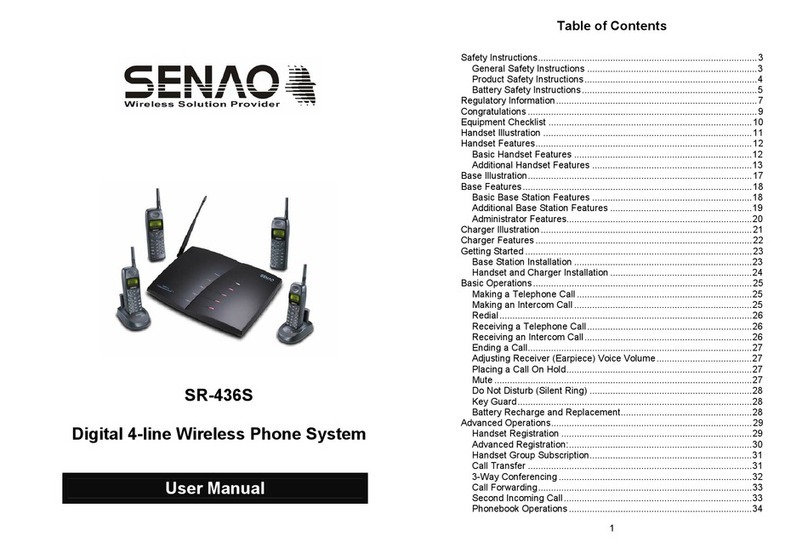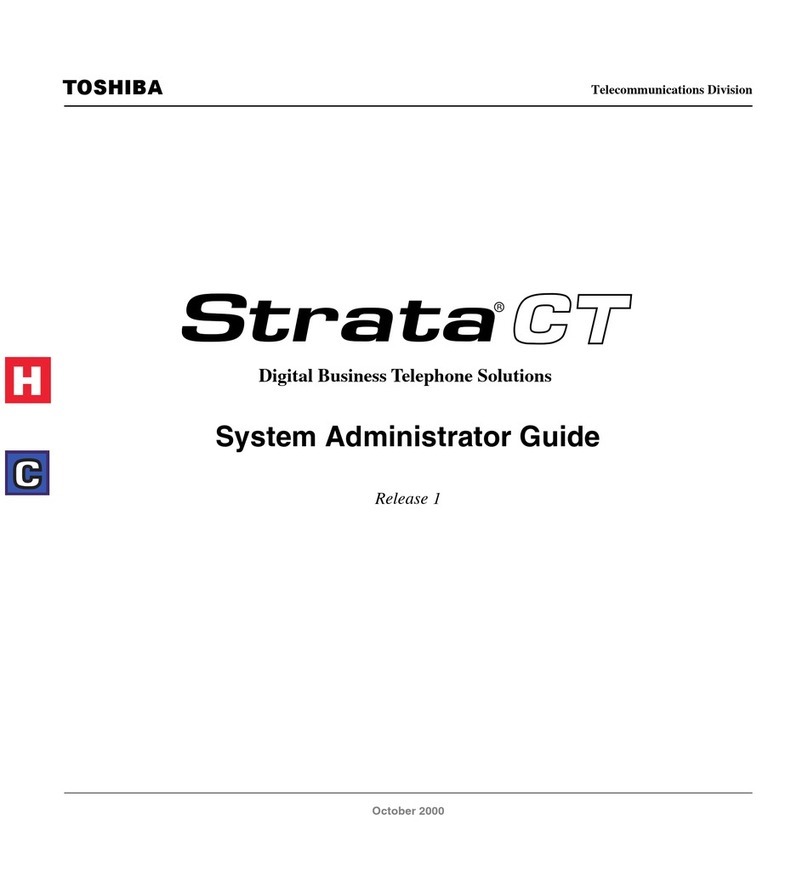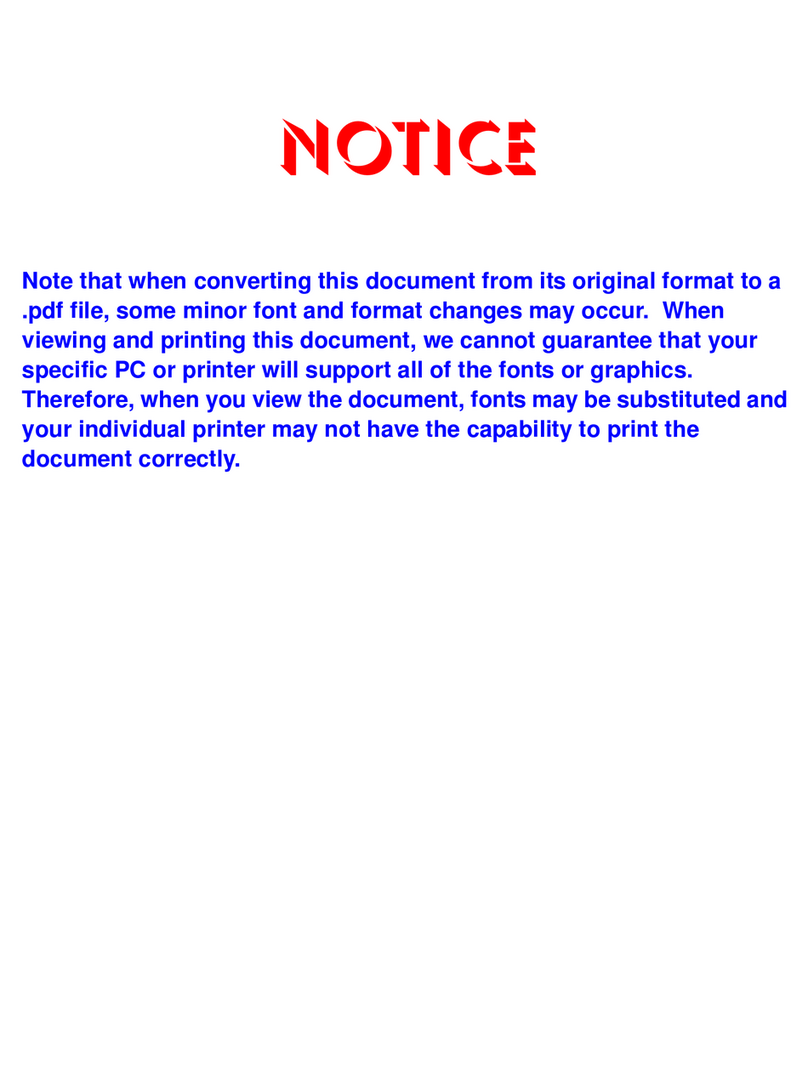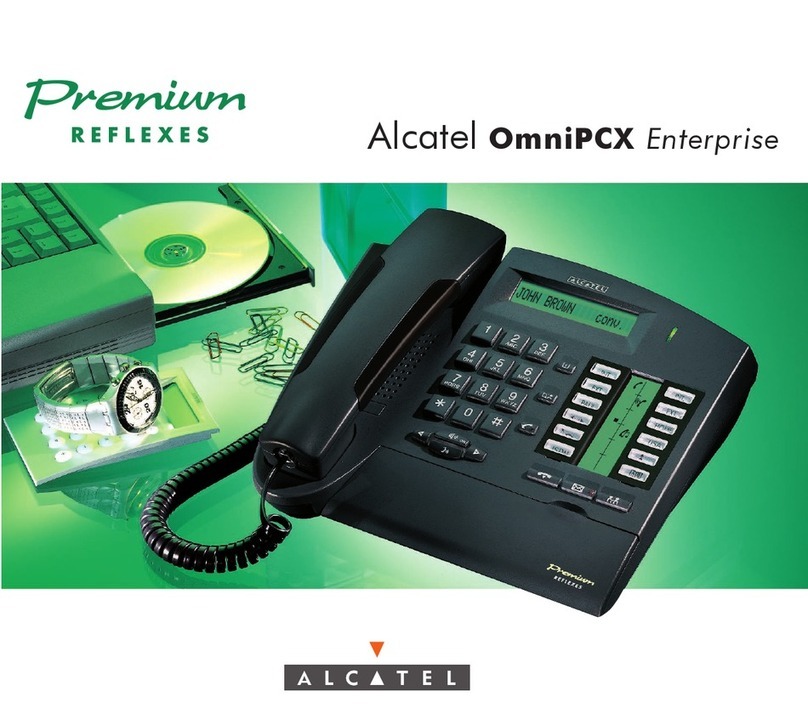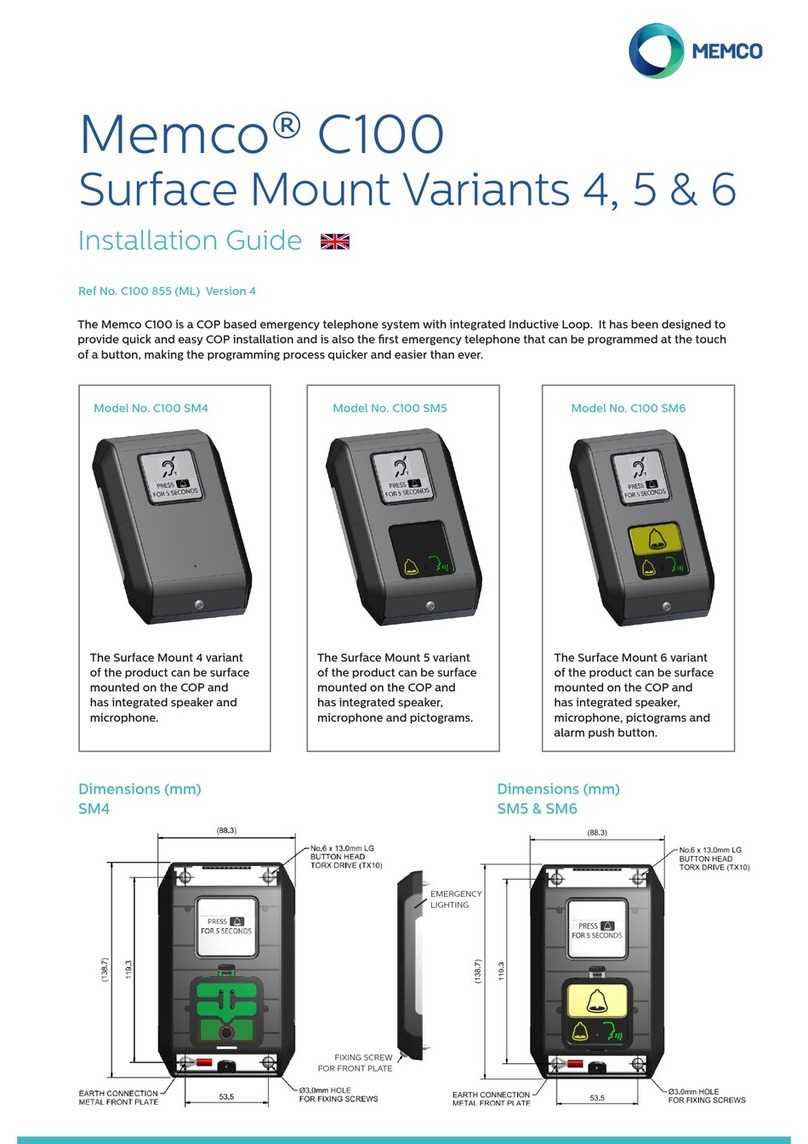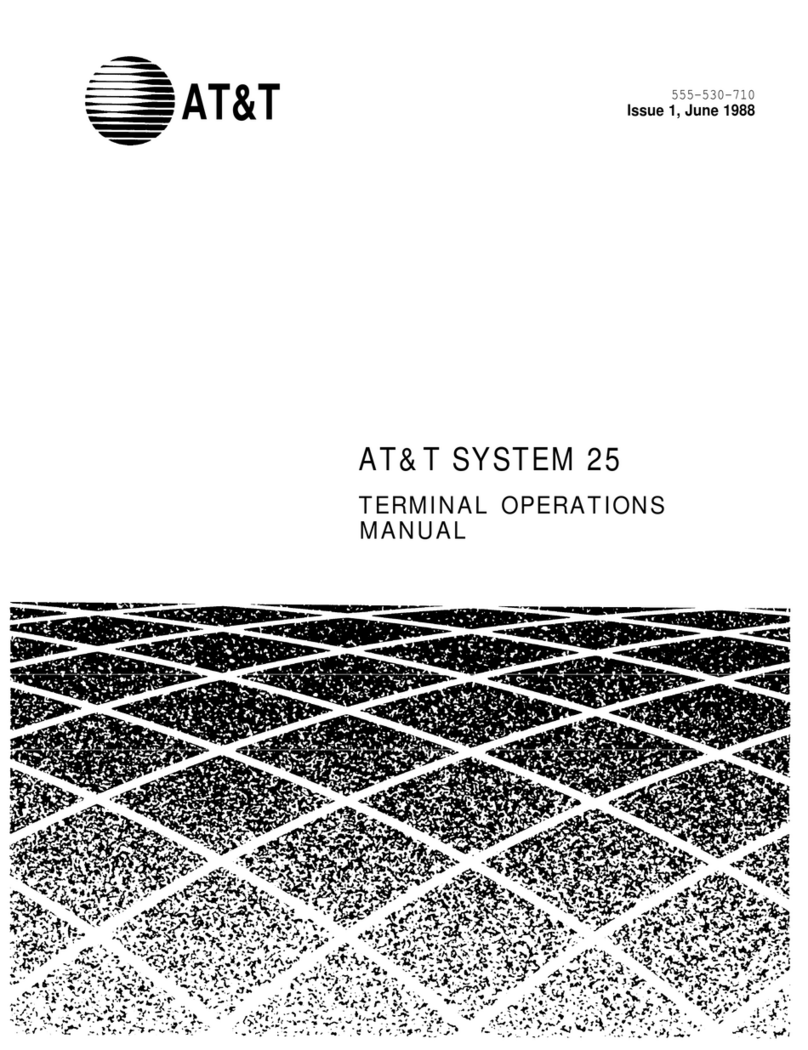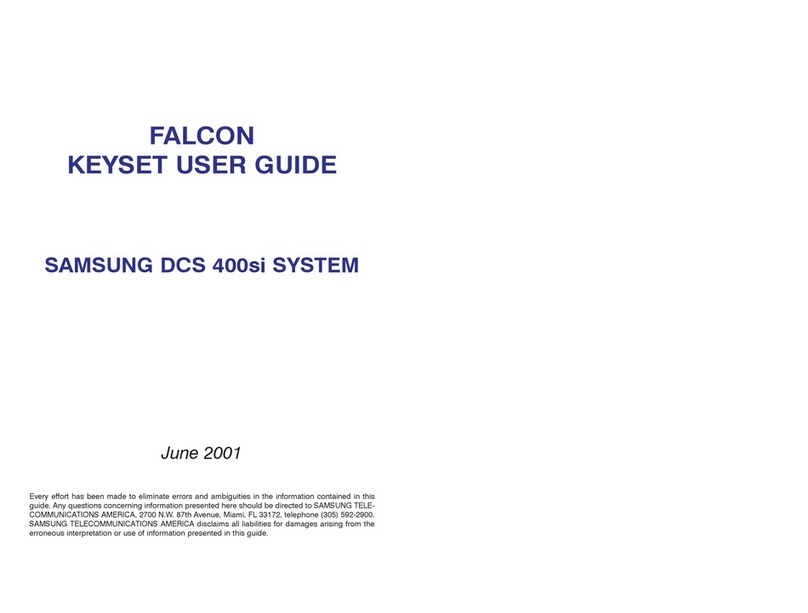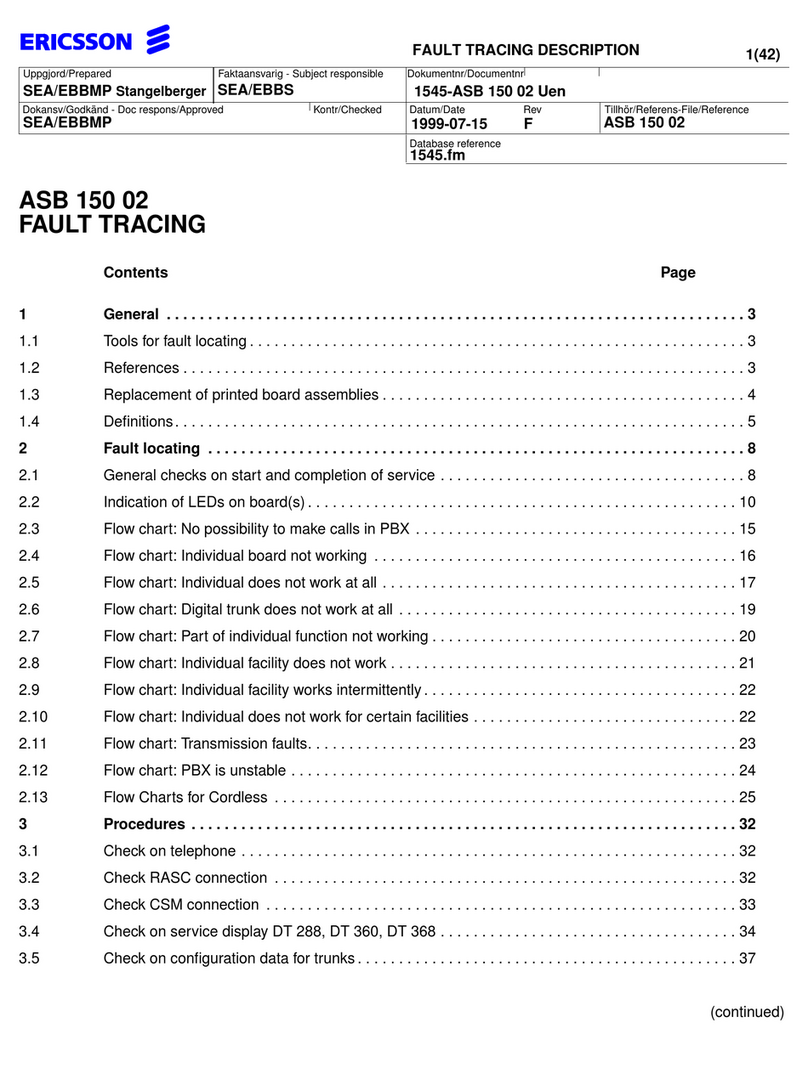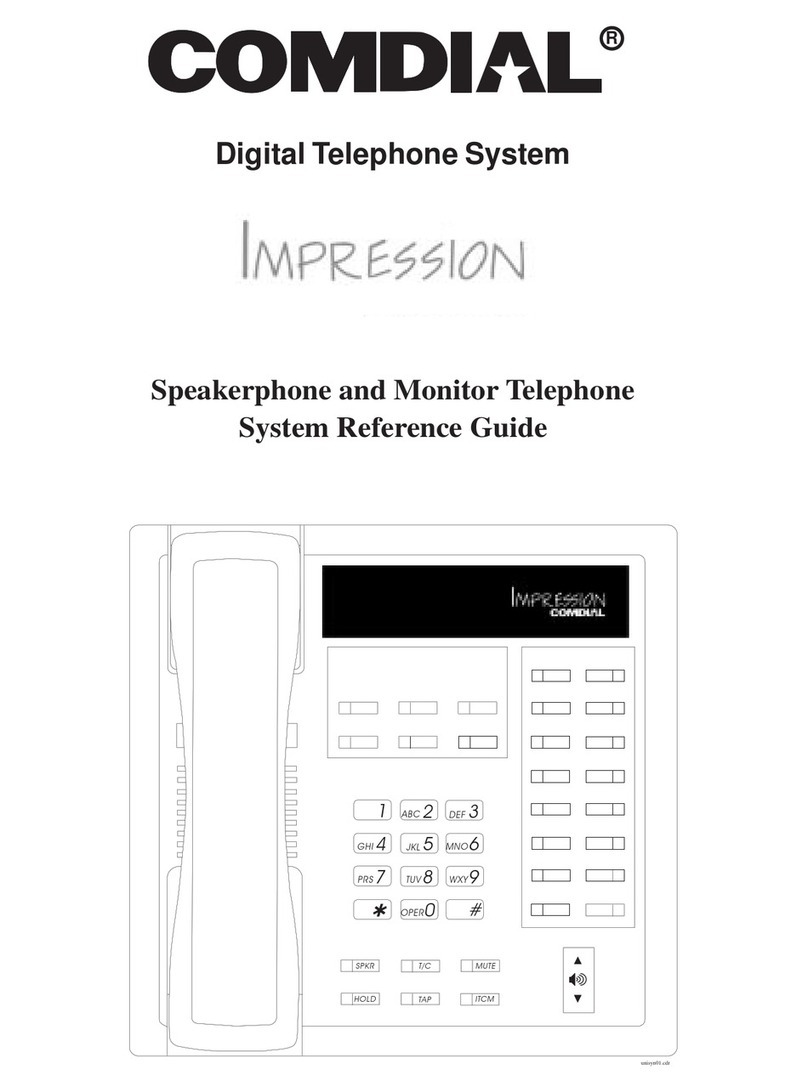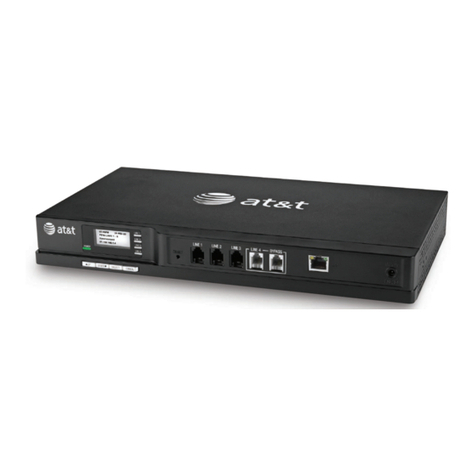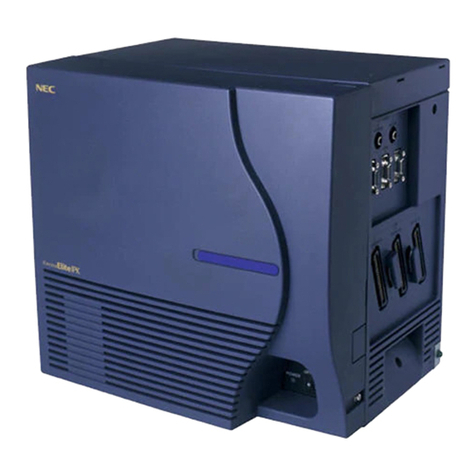SENAO SR-436 User manual

User’s Manual
SR-436
4-line Wireless Telephone
System

2
Table of Contents
Safety Instructions.....................................................4
General Safety Instructions.....................................4
Product Safety Instructions.....................................5
Battery Safety Instructions......................................8
Regulatory Information...............................................9
Congratulations .......................................................12
Equipment Checklist................................................13
Handset Illustration..................................................14
Handset Features....................................................15
Basic Handset Features .......................................15
Additional Handset Features.................................17
Base Illustration.......................................................22
Base Features.........................................................23
Basic Base Station Features.................................23
Additional Base Station Features..........................24
Administrator Features.........................................25
Charger Illustration ..................................................27
Charger Features ....................................................28
Getting Started ........................................................29
Base Station Installation .......................................29
Handset and Charger Installation..........................31
Basic Operations .....................................................32
Making a Telephone Call......................................32
Making an Intercom Call.......................................32
Redial ..................................................................33
Receiving a Telephone Call..................................33
Receiving an Intercom Call...................................34
Ending a Call:.......................................................35
Adjusting Receiver Voice Volume .........................35
Placing a Call On Hold .........................................35
Mute ....................................................................36
Do Not Disturb (Silent Ring)..................................36
Key Guard ...........................................................37

3
Battery Recharge and Replacement .....................37
Advanced Operations ..............................................39
Handset Registration............................................39
Advanced Registration: ........................................40
Handset Group Subscription.................................42
Call Transfer ........................................................43
3-Way Conferencing.............................................44
Call Forwarding....................................................45
Auto-Attendant (AA) .............................................47
Call Waiting..........................................................48
AA Configuration by Administrator ........................49
Change System Settings by Administrator ............51
Phonebook Operations.........................................52
Menu Operations..................................................56
Text Messaging....................................................61
Technical SpecificationsError! Bookmark not
defined.

4
Safety Instructions
Caution: Your wireless telephone gives you freedom
and flexibility to stay in touch while you move around.
However, the safe and responsible use of the phone
depends entirely on you.
When using your phone equipment, safety instructions
should be followed to avoid the risk of fire, electric
shock, injury to person, and damage to property.
General Safety Instructions
1. When using your wireless phone, ensure your
safety and the safety of others:
a. Always watch where you are walking and
standing.
b. Don’t let a phone call distract you from working
safely.
2. In an emergency:
a. If an emergency occurs, dial the emergency
phone number. Remember: if you are in an
area where your phone does not have a clear
signal from the base, it is highly probable that
the call may not go through. Locate the nearest
landline telephone or other communications
device to call for help.
b. Emergency calls may not automatically provide
emergency personnel with your name, phone
number or location. Tell the operator
i) Your name and phone number
ii) The nature of the emergency
iii) Whether police, fire, or medical assistance is
needed

5
iv) The exact location of the emergency,
including address, cross streets, mileposts or
landmarks.
3. Notice to Hearing Aid Users: This phone system is
compatible with inductively coupled hearing aids.
4. Notice to Cardiac Pacemaker Users: Preliminary
studies done by the US FDA and others have
shown that, although interference to the implanted
cardiac pacemaker may occur when operating very
closely, wireless telephones “do not seem to pose a
significant problem for pacemaker wearers.”
However, until more is known, FDA suggests that
people with pacemakers may want to take
precautions when using or carrying a wireless
telephone to ensure that there is ample distance
between the telephone and the pacemaker. Do not
carry the handset in a breast pocket. If you have
any reason to suspect that interference is taking
place, turn off your handset immediately.
Product Safety Instructions
1. Read and understand all instructions.
2. Follow all warnings and instructions including those
marked on the product.
3. Changes or modifications to this product not
expressively approved by the manufacturer will void
the warranty and the FCC authorization to operate
the equipment. Use only manufacturer provided
accessories.
4. Do not use the telephone near water. Never spill
liquid of any kind on this product.
5. Unplug the product from the wall telephone jack and
power outlet before cleaning. Do not use liquid or
aerosol cleaners. Use damp cloth for cleaning.

6
6. Do not place this product on an unstable cart, stand
or table. The product may fall and cause personal
injury or damage to the product or other property.
Place the base station and the charger on hard, flat
surfaces.
7. Power Outage:
In the event of a power outage, your handset
charger will not recharge the handset battery, and
the base station will not allow you to make an
outgoing call or take an incoming call. Both the
charger and the base station require electricity for
operation. You should have a telephone that does
not require electricity available for use during power
outage, or have a temporary backup power supply.
8. Slots or openings in the product’s housing are
provided for ventilation. These openings must not
be blocked or covered. Placing the product on a
bed, carpeting, or other similar surface may block
these openings and should be avoided. This
product should never be placed near or over a
radiator or heat register, or in a built-in installation
unless proper ventilation is provided.
9. Never push objects of any kind into this product
through housing slots/openings as they may
damage the product, touch dangerous voltage
points or short out parts that could result in fire,
electric shock, or injury.
10.This product should be operated only from the type
of power source indicated on the marking label. If
you are not sure of thetype of power supply to your
home, consult your dealer or local power company.
11.Do not overload wall power outlets and extension
cords as this may result in fire or electric shock.
12.To avoid electric shock or burn, do not disassemble
this product. Send this product to an authorized
service center when service or repair work is

7
required. Call Customer Service for locations near
you. Opening or removing covers may expose you
to dangerous voltages, electrical currents or other
risks. Incorrect reassembling of the product may
cause electric shock when the product is
subsequently used.
13.Avoid using the product during a storm. There may
be a risk of electric shock from lightning.
14.Do not place the product where persons can step,
trip, or fall on the product.
15.Do not place conductive objects over or near the
antenna.
16.Do not use the product to report a gas leak while in
the vicinity of the leak.
17.Do not install the base station or the handset
charger near microwave ovens, radios, TV sets,
speakers, or other electrical equipment. These
appliances may cause interference to the product or
experience interference from the product.
18.Unplug the base station or the charger adaptor from
the wall power outlet and refer servicing to an
authorized service center under the following
conditions:
a. If liquid had been spilled into the product.
b. When the power supply cord or plug is damaged
or frayed.
c. If the product has been exposed to rain or water.
d. If the product does not operate normally by
following the operating instructions.
e. If theproduct has been dropped or housing has
been damaged.
f. If the product shows a distinct change in
performance.

8
Battery Safety Instructions
1. Use only manufacturer approved Nickel-Metal-
Hydride (NiMH) rechargeable batteries and charger.
Do not use other types of rechargeable batteries or
non-rechargeable batteries. The batteries could
short-circuit, and the battery enclosure may be
damaged causing a hazardous condition.
2. Follow the charging instruction in this manual and
instruction labels and markings in the handset and
charger compartments.
3. Battery must be recycled or disposed of properly.
Do not dispose the battery in a fire. The cells may
explode.
4. Do not dispose of the battery in municipal waste.
Check with local codes for disposal instructions.
5. Exercise care in handling the batteries in order not
to short-circuit the battery with conductive materials
such as rings, bracelets, keys, pocketknife, and
coins. The battery or conductive material may
overheat and cause burn or fire.
6. Do not expose batteries to rain or water.
7. Do not open or mutilate the battery. Released
electrolyte is corrosive and may cause injury to
eyes or skin. The electrolyte may be toxic if
swallowed.
8. During charging, the battery heats up. This is
normal and is not dangerous.

9
Regulatory Information
SR-436
FCC ID: NNA-SR-436
Canada ???????????
This device complies with Part 15 of the FCC Rules.
Operation is subject to the following two conditions:
1) this device may not cause harmful interference, and
2) this device must accept any interference received,
including interference that may cause undesired
operation.
Privacy of communications may not be ensured when
using this phone.
1. This telephone system complies with rules of the
FCC Part 68 and Canadian IC/DOC CS-03. On the
bottom of the base station is a label that contains,
among other information, the FCC Registration
Number, Ringer Equivalence Number (REN) and
the Universal Service Order Code, which is RJ-11C
in the U.S. or CA-11A in Canada. Your telephone
company may ask you for this information.
2. The REN is useful to determine the quantity of
devices you may connect to your telephone line and
still have all devices ring when your telephone
number is called. In most, but not all, areas the
sum of the REN’s of all devices connected to one
line should not exceed 5.0. To be certain of the
number of devices you may connect to your phone
line, you should contact you local telephone
company for the maximum REN in your area.
3. If your telephone equipment causes problems to the
telephone network, the telephone company may

10
ask you to disconnect your phone system from the
line until the problem has been corrected. Consult
with your local phone company for your rights if this
happens.
4. Your telephone company may make changes in its
facilities, equipment, operations, or procedures that
could affect the proper functioning of your telephone
system. Consult with your local phone company for
your rights if this happens.
5. This telephone system may not be used on coin
service provided by the telephone company.
Connection to party lines is subject to state tariffs.
6. This telephone system has been tested and found
to comply with the limits for Class B digital devices,
pursuant to Part 15 of the FCC Rules and RSS210
of the DOC Rules. These limits are designed to
provide reasonable protection against harmful
interference in a general public installation.
Operations of these devices may still encounter
interference from/tonearby TV’s, VCR’s, radios,
computers, or other electronic devices. To
minimize or prevent such interference, the
telephone system should not be placed or operated
near other electronic devices. If interference
occurs, moving the base station and the handset
farther away from them will often reduce or
eliminate the interference.
7. However, there is no guarantee that interference
will not occur in a particular installation. If this
telephone system does cause interference to other
electronic devices, which can bedetermined by
turning the system off and on, the user is
encouraged to try to correct the interference by one
or several of the following measures:
a. Increase the space separation between the
handset or base station and the device that is

11
experiencing interference. We recommend at
least 20 feet between the system and other
electronic devices.
b. Connect the base station to a power outlet on a
circuit separate from that used by the device
experiencing interference.
c. Consult the dealer or an experienced electronic
technician for help.

12
Congratulations
You have purchased an exceptional communications
tool from a leading telephone system manufacturer.
The Senao SR-436 4-line Wireless Telephone System
is ideal for the small office/business and the “last-mile”
Wireless Local Loop applications. The SR-436 is the
longest range, multi-line telephone and 2-way radio
communications system providing users unparallel
mobility and flexibility.
With sophisticated digital signal processing and high
quality hardware designs, the SR-436 provides long-
range telephone connections and 2-way handset-to-
handset communications in the “last-mile” connection
as well as a wide variety of business settings from
multi-level office buildings, factories, hotels/resorts,
convention facilities, warehouses, farms, business
complexes, construction sites, and other demanding
business environments.
The unique 2-way radio feature allows handsets to
communicate with each other as digital, full-duplex 2-
way radios. Members of work group(s) can be in
contact with their co-workers while leaving phone lines
available for incoming and outgoing calls. Handsets
that are within range of each other can use the 2-way
feature even while out of range of the base station.
SR-436 can support up to 90 handsets.

13
Equipment Checklist
1. In a Base + Handset package, please find the
following components:
a. Base Station x 1
b. Base Antenna x 1
c. Base AC/DC Adaptor x 1
d. Handset x 1
e. Handset Long Antenna x 1
f. Handset Short Antenna x 1
g. Battery Pack x 2
h. Charger x 1
i. Charger AC/DC Adaptor x 1
j. Telephone Cord x 1
k. Handset Carrying Case x 1
l. User’s Manual, Warranty Card
2. In a Handset package, please find the following
components:
a. Handset x 1
b. Handset Long Antenna x 1
c. Handset Short Antenna x 1
d. Battery Pack x 2
e. Charger x 1
f. Charger AC/DC Adaptor x 1
g. Handset Carrying Case x 1
h. User’s Manual, Warranty Card
3. Optional Accessories:
a. Outdoor Antenna Kit (including antenna and
cable)
b. Fixed Terminal
c. Remote Repeater

14
Handset Illustration

15
Handset Features
Basic Handset Features
1. Antenna
2. Earpiece/Receiver
3. Microphone
4. 4-line LCD (Liquid Crystal Display)
a. The LCD display has LED (Light Emitting Diode)
for backlighting.
b. The 1st line of LCD consists of icons (see
below).
c. The 2nd and 3rd lines of the LCD, maximum 14
characters each, display status, message, menu
selections, or user-editable alphanumerical
characters.
d. The last line displays the left and right soft keys.
e. Icons (from left to right):
i) RSSI (Receive Signal Strength Indicator)
The number of bars is proportional to the
radio signal strength received.
i) Call in-progress (ON/OFF-Hook)
Indicates if phone line mode is active.
ii) Intercom in-progress
Indicates if Intercom mode is active.
iii) Handset ID
Displays a handset icon and a 2-digit
Handset ID.
iv) Two-Digit Address Index
Shows address index when viewing contents
of the call logs.
v) Line Indicator

16
Indicates the line number being accessed by
the handset.
vi) Battery Strength
•Number of bars is proportional to the
amount of battery time remaining.
•Indicates charging when in charger
cradle.
5. TALK/FLASH
a. Places or answers a telephone or intercom call.
b. Toggles between calls in built-in call waiting
operations.
c. Sends aFlash signal tophoneline to retrieve a
dial tone after the call ends, or to perform phone
company provided call waiting operation during
a call.
6. 2-WAY/INTERCOM
a. Places an intercom call to another handset ID or
a group ID (group paging).
b. Intercom calls are digital, full duplex, and are
conducted without the assistance from the base,
thus leaving thebase’s line handling capacity
intact.
7. Ringer
a. Rings to an incoming call.
b. Distinctive alert sounds indicating various
events:
i) Single Beep: successful key entry
ii) Double beep: failed operation or invalid key
entry, also indicates power on/off
iii) Periodic 1-Long-2-Short Beep (every 2
seconds): low battery warning
iv) Periodic Long Series of Beeps (repeat every
30 seconds): indicates a call is on-hold

17
v) Continuous Beep: indicates out of range
when in talk mode
8. Battery
9. Headset Jack
•2.5 mm headset jack for hands-free operation
10.Left/Right Soft Keys
•Make menu selection.
11.Up/Down Scrolling Keys
a. Scroll through records and menu selections.
b. Adjust receiver voice volume when in Talk
mode.
12.END Key
a. Ends a call.
b. Leaves current menu operation, up one level.
13.Power On/Off Key
Additional Handset Features
1. Up to 90 handsets and 99 Handset IDs
a. ID 10-99: individual Handset IDs. ID 10 and 11
are the first two ID’s assigned by the base and
are designated “administrators” who can change
base settings such as greeting message and
other base administrative functions.
b. ID 01-09: Group ID. Handsets can “subscribe”
from the handset menu to group(s) and be
paged when a landline caller or an intercom
caller enters a Group ID.

18
2. Over-the-air handset registration
3. Security
•One of the 65,536 possible security codes is
randomly selected by the base station during
registration.
4. Ringer Vibrator
5. Call Waiting
a. Notifies handset the arrival of a 2nd call from
another phone line.
b. Allows handset to toggle between 2 phone calls.
6. Caller ID
•Displays incoming call phone number and name
on the LCD (needs Caller ID service from local
telephone company)
7. Call waiting with Caller ID
•Displays 2nd incoming call information on the
same phone line when 1st call is in progress
(needs Call Waiting with Caller ID service from
local telephone company)
8. Call Transfer
a. Direct Transfer: transfer a telephone call to
another handset without announcement.
b. Announced Transfer: speak to the destination
handset before transferring a telephone call.
9. Call Forwarding
a. Forward all incoming phone calls to another
handset.
b. Forward all incoming phone calls to another
landline or cellular phone number.

19
Note:
1. Once enabled from the handset, all phone calls will
be routed tothe designated number until disabled.
A warning message will appear on the LCD.
2. Intercom calls are not forwarded.
10.Call Conferencing
a. 2-handset and 1-line conferencing
b. 1-handset and 2-line conferencing
11.DND (Do Not Disturb, i.e., Silent Ring)
12.User programmable Flash key timing
•9-level (100 ms - 900 ms) timing selections
Note: The default value (600 ms) works in most areas.
Changing this setting may causeFlash key not
working. Change only when you are certain of the new
value would work.
13.Three Call Logs
a. Called Log: Stores 10 phone numbers (up to 28
digit each) dialed most recently. Can perform
last-number redial on all 10 numbers.
b. Received Call Log: 10 entries (14-digit phone
number, 14-character names, and time stamp),
needs Caller ID service from local telephone
company.
c. Missed Call Log: 10 entries (14-digit phone
number, 14-character names, and time stamp),
needs Caller ID service from local telephone
company.
d. Phone numbers and names can be saved into
phonebook while in display.

20
14.Any Key Answer (except PWR, END, Silent Soft
Key)
15.Keyguard
•Prevents accidental dialing.
16.Dialing Prefix
•Up to 14 digits, including pause(s), one access
code can be pre-programmed tobe added
automatically in front of the dialed number when
dialing from call logs, phonebook, and dial-and-
send dialing.
17.Call Hold
a. Places call on hold.
b. Change battery while call is on hold.
18.Mute
19.Phonebook
a. 30 entries, each stores a phone number or
handset ID (up to 28-digit) and name (up to14-
character)
b. Alphabetically sorted display and search.
c. Dial from display.
20.Automatic 2-level transmit power control
21.Sixteen-level LCD contrast selections
22.Six-level voice volume selections
23.Five-level ringer volume selections
(high/low/vibrate/vibrate-then-ring/off)
24.Three-level keytone volume selections (high/low/off)
Table of contents
Other SENAO Telephone System manuals
Popular Telephone System manuals by other brands
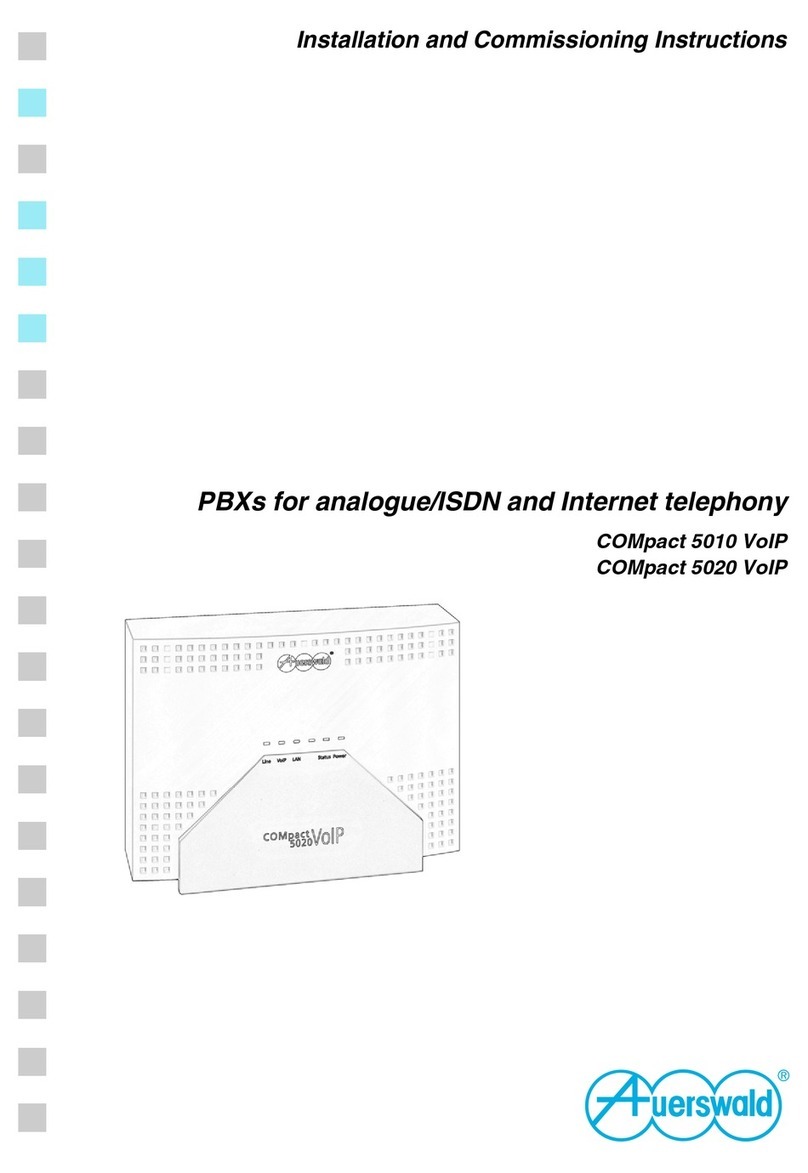
Auerswald
Auerswald COMpact 5010 VoIP Installation and commissioning instructions
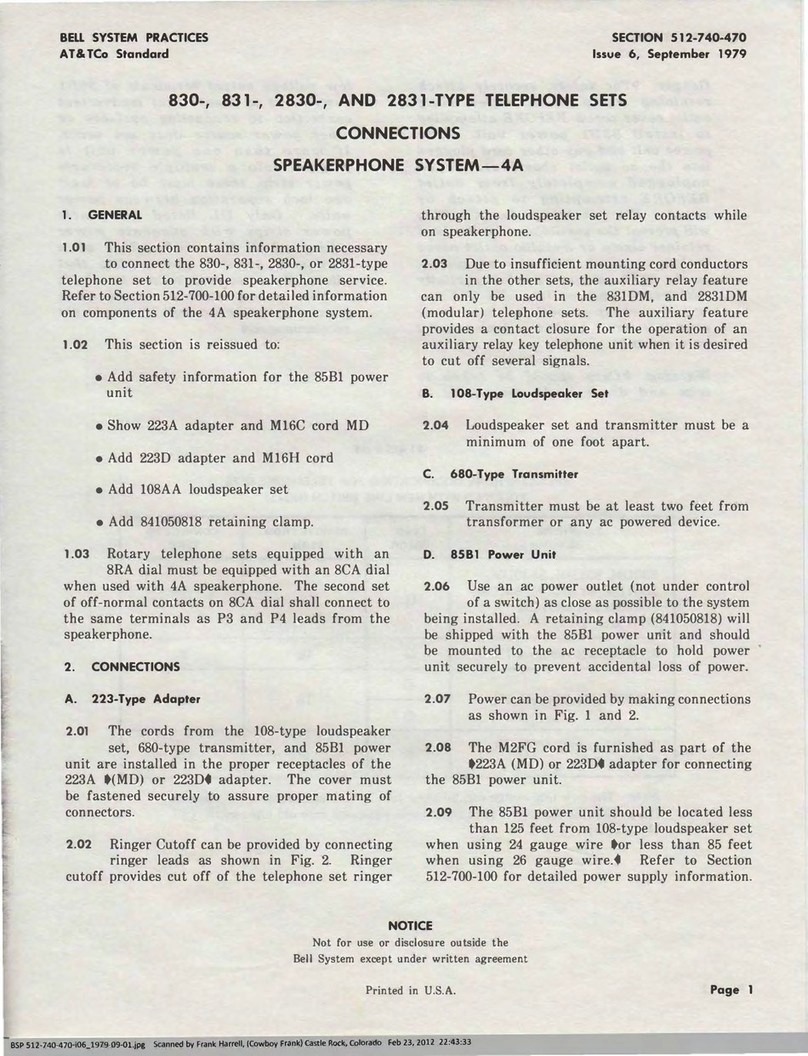
Bell System Practices
Bell System Practices 830 Connections
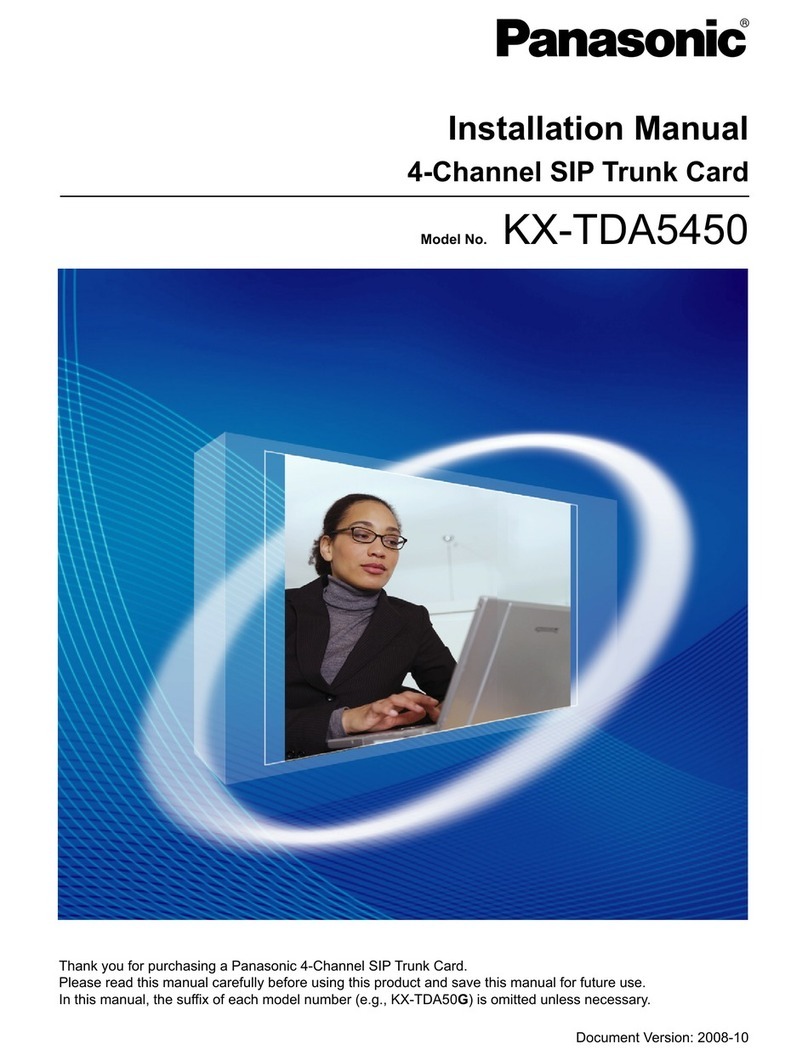
Panasonic
Panasonic KX-TDA5450 installation manual
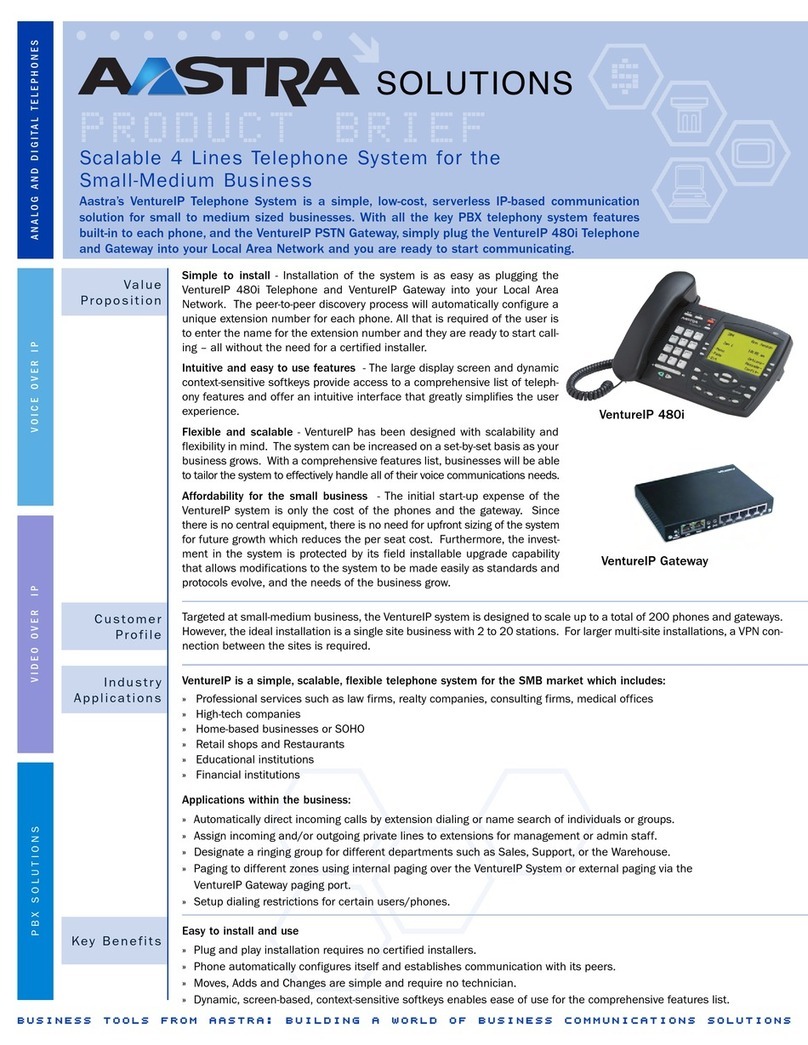
Aastra
Aastra VentureIP 480i Specifications
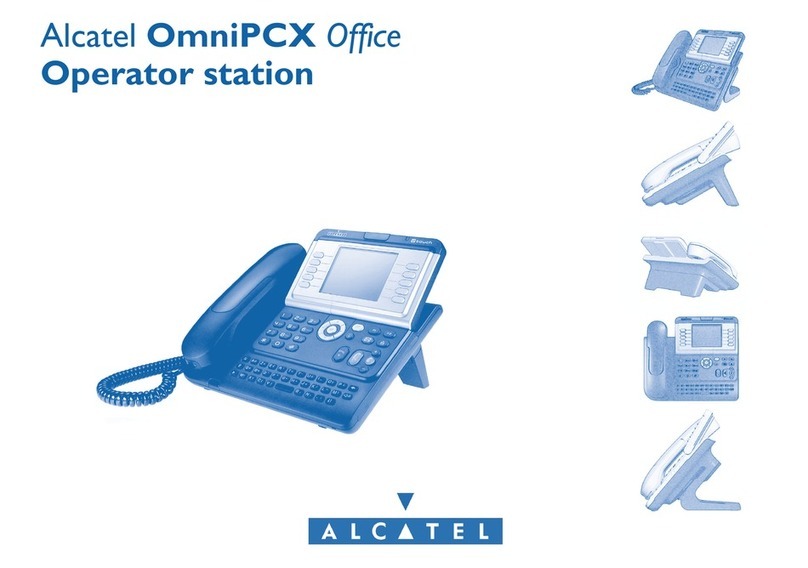
Alcatel
Alcatel OmniPCX Enterprise 4038 user manual
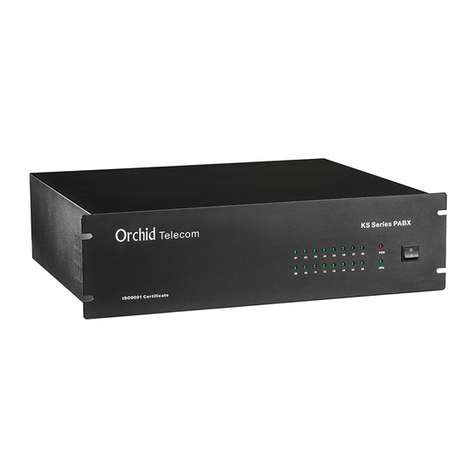
Orchid Telecom
Orchid Telecom KS 832 Administration guide
